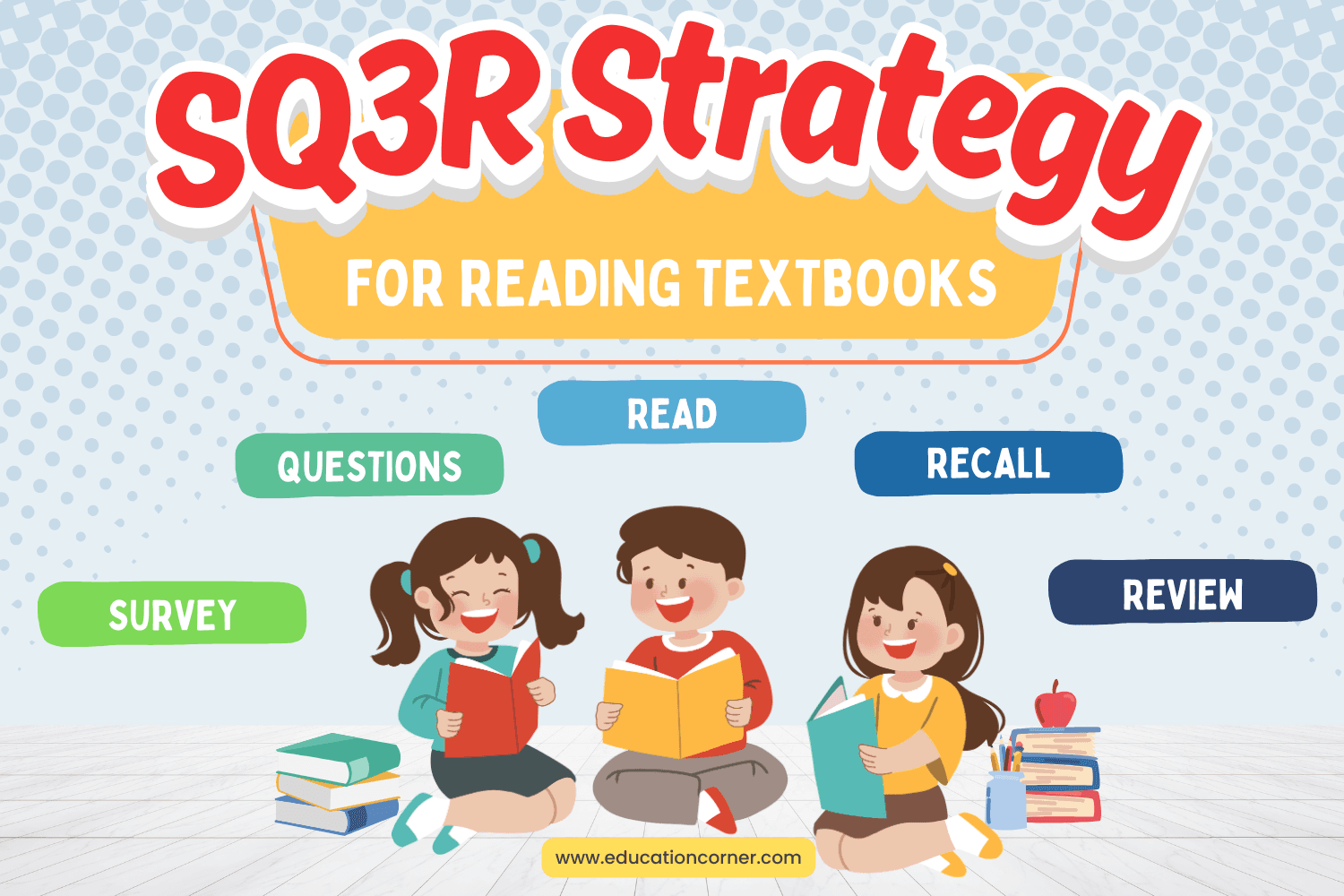The following is the SQ3R formula, adapted from FP Robinson’s Effective Study, that will help improve your understanding, recall and retention of textbook material.
- S = Survey the pages you plan to read.
- Q = Question what you intend to take from your study session.
- R3 = Read, Recall, and Review.
Step 1. Survey
Before reading your text, get a general idea of the main themes, topics and concepts by skimming through the text or chapters. Identify and read the chapter headings, subheadings or introductions.
Notice any graphics, such as charts, maps or other diagrams. Read the chapter summaries and conclusions. Try to develop an idea of what the author is going to say and communicate.
- Surveying the text provides your reading with focus and direction.
- Helps you develop an idea of what you’ll be reading.
- Allows you to anticipate the text.
Step 2. Questions
As you survey the text, turn chapter headings and subheadings into questions. For example, the heading “Causes of World War II” changes to “What are the primary factors that led World War II?”
Turning chapter headings and subheadings into questions provides direction for your reading and keeps you engaged. When your mind is actively searching for answers as you read, you stay engaged.
- Write out the questions you develop from chapter headings.
- Examine the questions to find the direction of the text.
- Try to develop plausible answers to these questions before reading.
- Attempt to answer these questions as you read.
Step 3. Read
Now that you’ve surveyed the text and developed a set of questions, read the text paying close attention to the direction of the text keeping in mind the information you already know and that you want to discover. As you read you may find the need to develop additional questions.
- Read for meaning and understanding.
- Seek to answer the set up questions you developed in the previous step.
- Take notes in the margins or on a separate piece of paper.
- Take breaks if necessary.
Step 4. Recall
Recall is one of the most important steps for comprehending, mastering and retaining information from textbooks. More time should be spent on recall than reading itself. Without referring to your notes or your textbook, immediately after completing each section of reading, develop in your own words a summary of what you read, highlighting the most important topics, concepts and themes. Recite your summary to yourself or someone else.
Recall enables you to:
- Make sure you understood what you read
- Transforms information you retained from reading into a usable form.
- Find out what you didn’t understand.
- Forces you to think about what you read.
Step 5. Review
Now go back over the question you developed using chapter headings and subheadings. Can you develop a compelling answer to each without relying on the text or your notes? If not, look back over your notes, the answer you wrote down and the annotation you put in your textbook.

